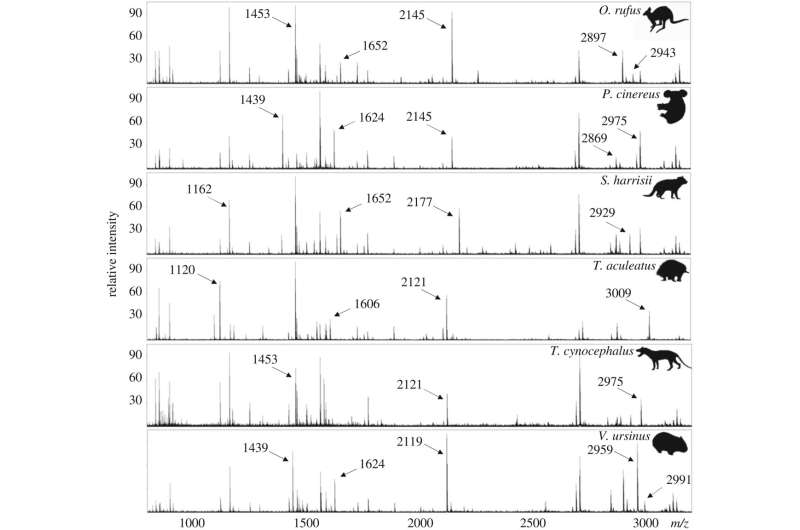October 27, 2021 report
Identifying old bones by scanning the collagen in them using mass spectrometry

A team of researchers from Australia, Germany, the U.S. and Canada has found that it is possible to identify old bones by scanning the collagen they contain using mass spectrometry. In their paper published in the journal Royal Society Open Science, the group describes using the technique to identify extant monotreme and marsupial species on Australia's Barrow Island.
Collagen is a fibrous protein typically found in connective tissue in humans and other animals. Prior research has shown that it has a unique chemical signature between species. In this new effort, the researchers applied that knowledge to the study of bones found on Barrow Island.
As the researchers note, figuring out which animal left its bones behind is quite often difficult, particularly when they have become fragmented. In the past, zooarchaeologists have had to rely on the shape of the bones or teeth to identify them. To improve on these methods, the researchers studied the use of mass spectrometry to identify collagen sources in their lab. Such efforts led to the development of a technique they call ZooMS (zooarchaeology by mass spectrometry.)
The technique involves collecting samples as small as a few milligrams, dissolving them with certain enzymes and then scanning the results with a mass spectrometer. Once scanned, the results are compared with other samples that have already been identified. During testing, the researchers identified 24 unique species of creatures living in Australia.
The researchers note that the technique is not perfect, particularly if there is high diversity in a collection of bones. They note that in some cases, the technique may only be able to go as far as identifying a genus for the bones under study. Still, the researchers were able to use the technique to identify one species of turtle at a dig site on Barrow's Island. Prior research had shown that the large collection of bones there were left on the island by indigenous divers in the 19th century who had been forced to dive for pearls by European masters. The bones were the remains of the animals the divers had captured to feed themselves.
More information: Carli Peters et al, Species identification of Australian marsupials using collagen fingerprinting, Royal Society Open Science (2021). DOI: 10.1098/rsos.211229
Journal information: Royal Society Open Science
© 2021 Science X Network


















